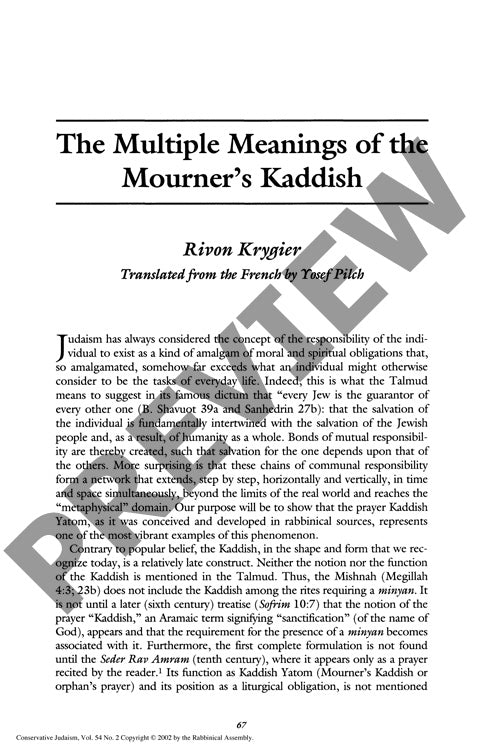The Multiple Meanings of the Mourners Ka
Couldn't load pickup availability
The Mourner's Kaddish, Judaism's central prayer for the bereaved, emerged not as a mourning ritual but as a general liturgical formula that underwent a profound transformation across centuries of Jewish practice. While modern Jews know it primarily as a memorial prayer, textual analysis of sources from sixth-century treatises through medieval codes reveals that its association with mourning first appeared in eleventh-century Ashkenazic communities. The prayer's pivotal declaration, "May His glorious Name be praised forever and ever," originated in Temple-era responses to priestly benedictions and serves three distinct theological functions: establishing intergenerational continuity through acts of sanctification, sustaining monotheistic faith during periods of grief, and performing theurgical work that benefits both the living and the deceased. Through examination of rabbinical sources, medieval texts, and talmudic literature, this research uncovers how the Kaddish creates chains of spiritual responsibility that span both temporal and metaphysical boundaries. Medieval legend and midrashic sources demonstrate that the Mourner's Kaddish ultimately represents a sophisticated theological construct that transforms personal grief into communal divine sanctification, working to restore cosmic equilibrium between human and divine realms while preserving religious continuity across generations.

More Information
-
Physical Description
-
Publication Information
Published 2002
ISBN
-
Publication Credits
Rivon Krygier

